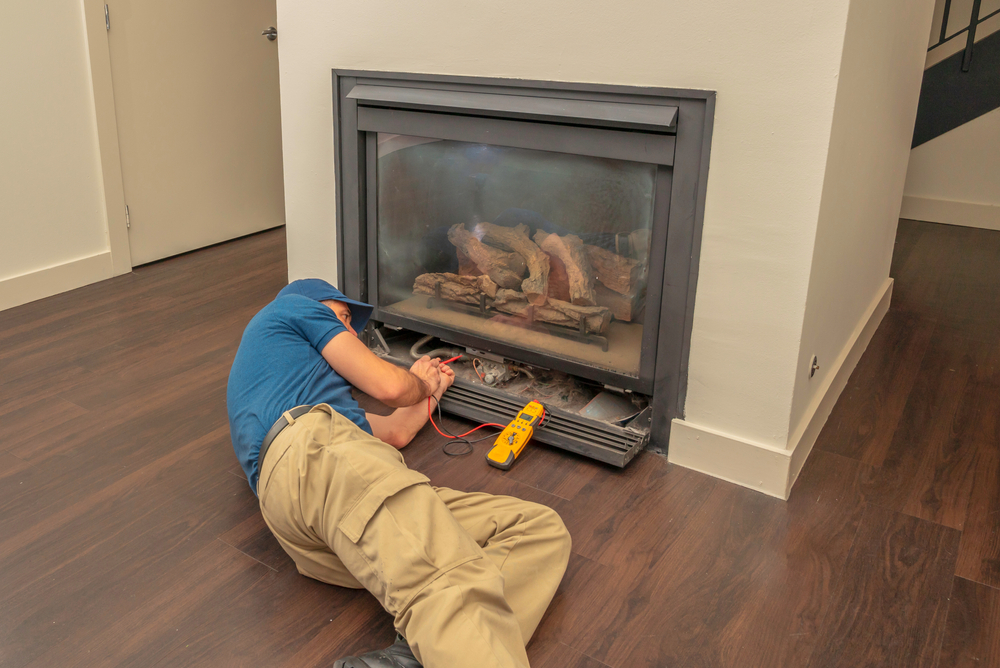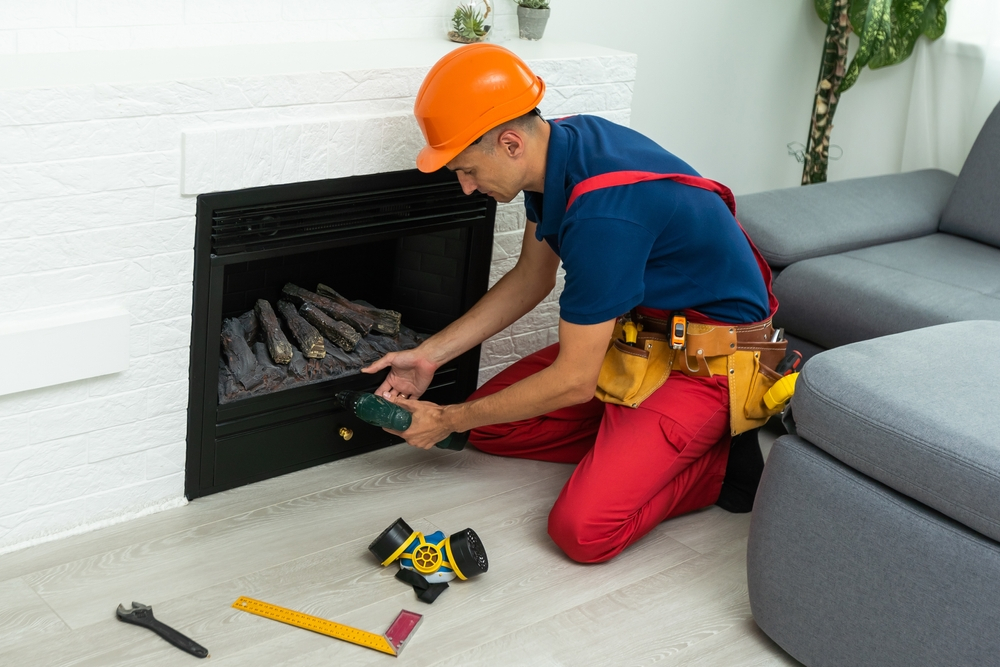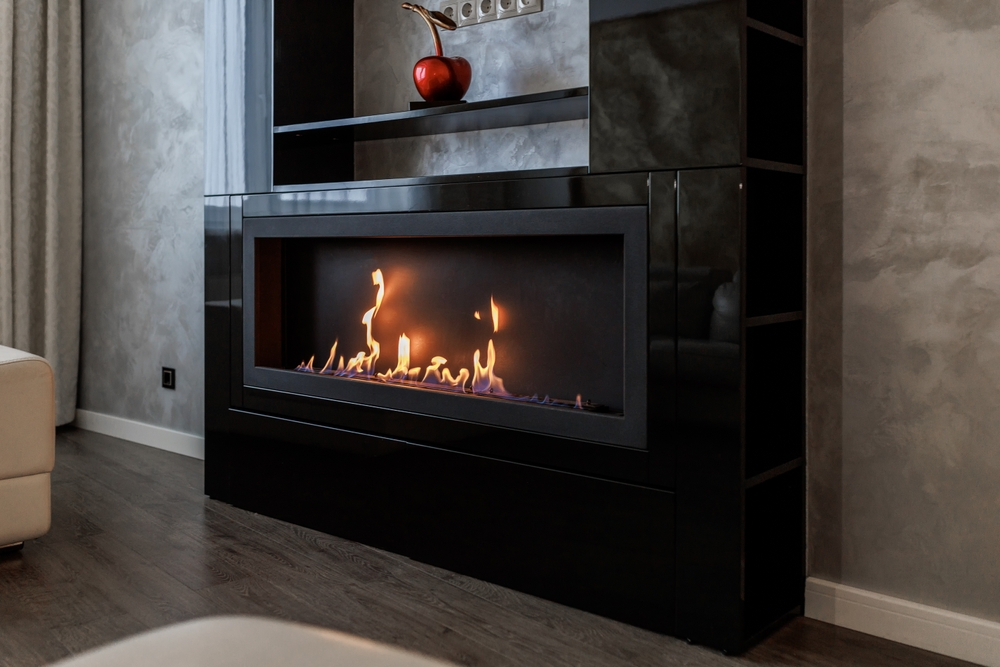Gas Fireplace Cleaning Cincinnati
Did you know that your gas fireplace needs to be serviced every year to ensure safe operation?
If you are like most people you were unaware of this necessity.
It is recommended that a licensed service technician inspects your gas fireplace annually to ensure the safe, efficient, and reliable operation of your gas unit.
For the safety of your home, it is recommended that both gas fireplaces and wood-burning fireplaces including stove inserts and pellet stoves be serviced once a year. Any time you have a live-fire burning in your home you want to make sure everything is performing at optimal efficiency for safety and reliability.
There are a lot of moving parts in gas fireplaces. Servicing those parts to make sure they have been adjusted appropriately and identifying when they need to be replaced will give you peace of mind when using your appliance. Those parts will also last longer when they are serviced on an annual basis saving you money in the long run.
Another thing to consider is that there is a higher risk of having a carbon monoxide issue due to parts wearing out if you do not get your fireplace inspected by a professional every year.
If you don’t use your gas unit often there is a possibility of bugs and spiders in the venting living and spinning webs. This can cause issues with proper venting and can also be a factor in causing a carbon monoxide issue.
So even though gas fireplaces don’t cause creosote build up like in a wood-burning fireplace there can still be issues with parts needing to be replaced or adjusted. A yearly inspection is the best solution to keeping your family safe from carbon monoxide leaks due to unexpected failure of worn-out parts.
We offer gas fireplace repair and cleaning here in Cincinnati, Ohio. Chimcare started years ago as a family-based business. Since then we have grown from one chimney sweep to a crew of licensed technicians offering you home solutions from fireplace inspection, cleaning, installation, and other related services.
Simply call to schedule an inspection and gas fireplace cleaning which includes the safety inspection. This service will give you peace of mind, save you money, and could save your life.
Facts About Cincinnati
Climate
| Jan | Feb | Mar | Apr | May | Jun | |
|---|---|---|---|---|---|---|
| Average high in ºF | 39 | 44 | 55 | 65 | 75 | 83 |
| Average low in ºF | 22 | 26 | 34 | 43 | 53 | 62 |
| Days with precipitation | 13 | 11 | 13 | 12 | 12 | 13 |
| Hours of sunshine | 115 | 137 | 186 | 222 | 273 | 309 |
| Av. precipitation in inch | 2.87 | 2.64 | 3.82 | 3.82 | 4.72 | 4.17 |
| Jul | Aug | Sep | Oct | Nov | Dec | |
|---|---|---|---|---|---|---|
| Average high in ºF | 87 | 85 | 79 | 67 | 55 | 44 |
| Average low in ºF | 66 | 64 | 57 | 44 | 36 | 27 |
| Days with precipitation | 10 | 9 | 9 | 9 | 10 | 11 |
| Hours of sunshine | 323 | 295 | 253 | 205 | 138 | 118 |
| Av. precipitation in inch | 3.86 | 3.98 | 3.11 | 2.83 | 3.31 | 3.11 |
Source: https://www.usclimatedata.com/climate/cincinnati/ohio/united-states/usoh0188
In 1950 Cincinnati reached its peak population of 504,000 residents; it has lost population in every census-count since that time. In the late-20th century industrial restructuring caused a loss of jobs. The Census Bureau’s 2006 estimates put the population at 332,252, representing a small increase from 331,310 in 2005. The city had officially challenged the original census numbers. Mayor Mark Mallory repeatedly argued that the city’s population was 378,259 after a drill-down study was performed by an independent, non-profit group based in Washington, D.C. As of the U.S. Census Bureau’s July 2018 estimate, the population stood at 302,601, down nearly 30,000 from 2006.
As of the census of 2010, there were 296,943 people, 133,420 households, and 62,319 families residing in the city. The population density was 3,809.9 inhabitants per square mile (1,471.0/km2). There were 161,095 housing units at an average density of 2,066.9 per square mile (798.0/km2). The racial makeup of the city was 49.3% White, 45.0% African American, 0.3% Native American, 1.8% Asian, 0.1% Pacific Islander, 1.2% from other races, and 2.5% from two or more races. Hispanic or Latino of any race were 2.8% of the population.
There were 133,420 households, of which 25.4% had children under the age of 18 living with them, 23.2% were married couples living together, 19.1% had a female householder with no husband present, 4.4% had a male householder with no wife present, and 53.3% were non-families. 43.4% of all households were made up of individuals, and 9.9% had someone living alone who was 65 years of age or older. The average household size was 2.12 and the average family size was 3.00.
The median age in the city was 32.5 years. 22.1% of residents were under the age of 18; 14.6% were between the ages of 18 and 24; 28.4% were from 25 to 44; 24.1% were from 45 to 64; and 10.8% were 65 years of age or older. The gender makeup of the city was 48.0% male and 52.0% female.
As of the 2000 census, the Cincinnati-Middletown−Wilmington Metropolitan Statistical Area had a population of 2,155,137 people, making it the 24th-largest metropolitan statistical area in the country. It includes the Ohio counties of Hamilton, Butler, Warren, Clermont, Clinton and Brown, as well as the Kentucky counties of Boone, Bracken, Campbell, Gallatin, Grant, Kenton, and Pendleton, and the Indiana counties of Dearborn, Franklin, and Ohio.
Top 5 Gas Fireplace Cleaning FAQs – Cincinnati, Ohio
1. How often should I have my gas fireplace serviced?
Most experts recommend having your gas fireplace professionally inspected and cleaned at least **once a year**, or **semi-annually** if used frequently. This helps maintain efficiency and safety. :contentReference[oaicite:1]{index=1}
2. What is included in a full gas fireplace service?
A comprehensive service usually includes cleaning the glass, logs, burner, and firebox; inspecting gas lines, ignition/pilot system, venting, valves, and seals; plus testing for leaks and carbon monoxide safety. :contentReference[oaicite:2]{index=2}
3. Can I maintain the fireplace myself between professional visits?
Yes. After the unit is cool, you can clean the glass, dust logs, and vacuum the firebox and vents. **Do not** touch gas connections, burners, or pilot components—leave that to trained technicians. :contentReference[oaicite:3]{index=3}
4. Why is annual chimney or vent cleaning still necessary?
Even gas fireplaces can develop soot, debris, or nests in the chimney or venting system—leading to blockages or corrosion. Annual cleaning helps prevent these hazards and maintains proper airflow. :contentReference[oaicite:4]{index=4}
5. What warning signs mean I need service now?
Watch for unusual smells (like sulfur or gas), flickering or weak flames, soot buildup, or difficulty igniting. These can indicate leaks, combustion issues, or blocked vents—prompt service is advised. :contentReference[oaicite:5]{index=5}




 >
>
Leave a Reply